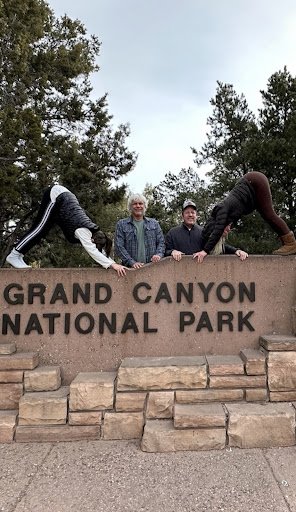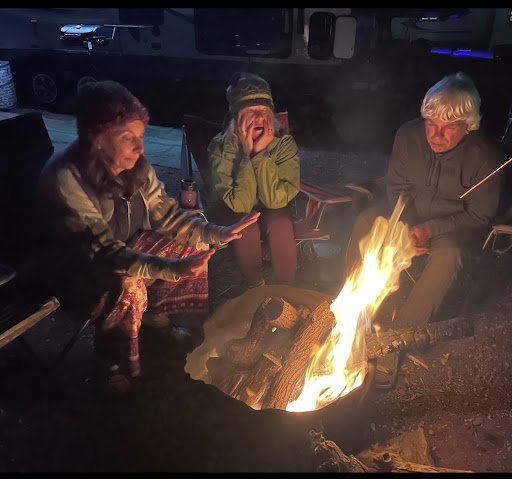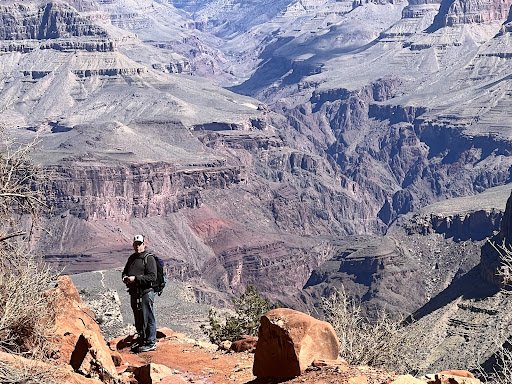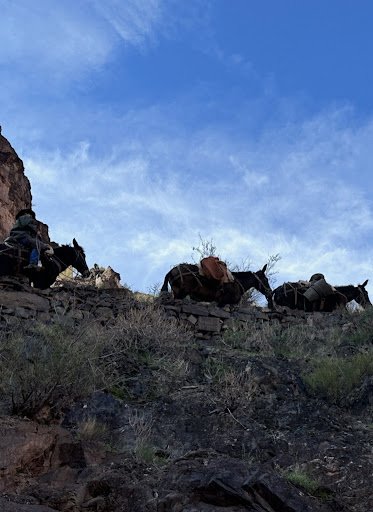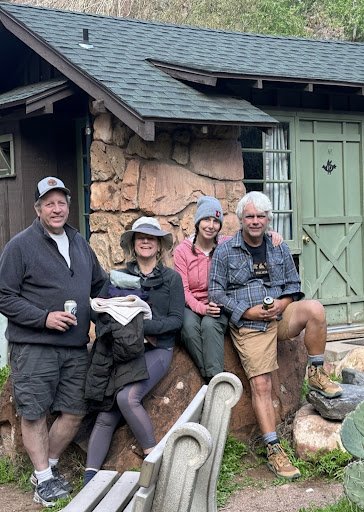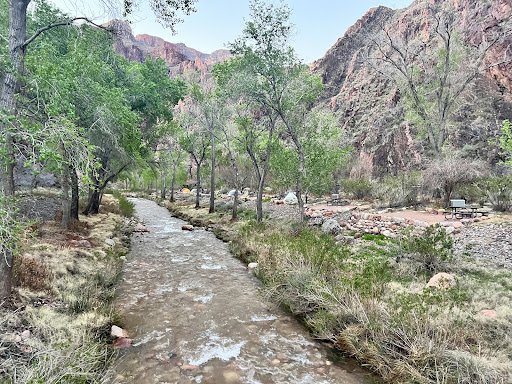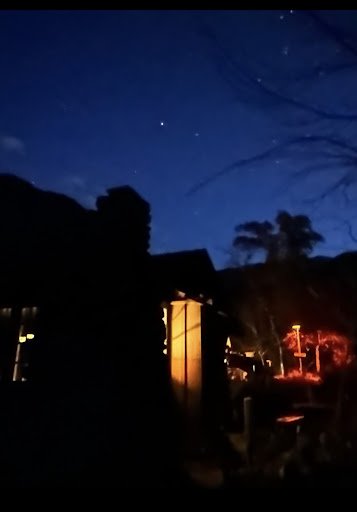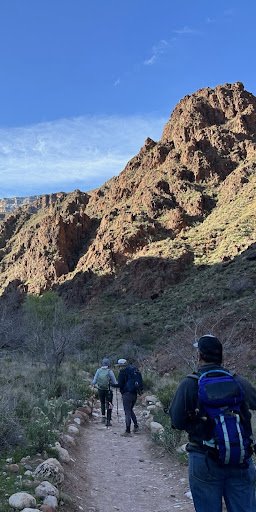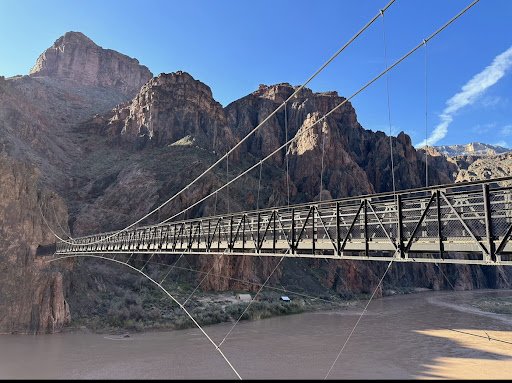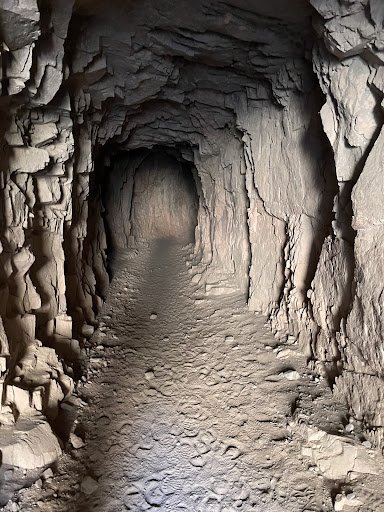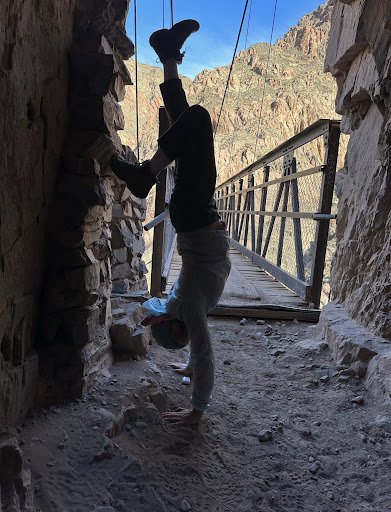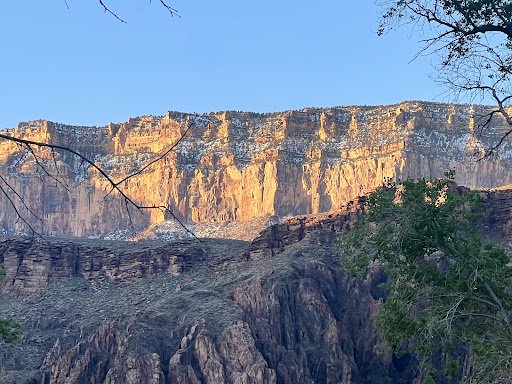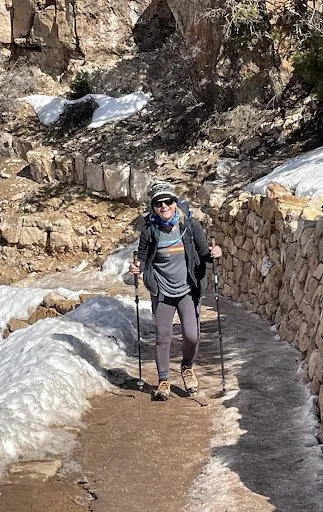It Was a Grand Adventure!
Grand Canyon National Park is bigger than the
entire state of Rhode Island.
The Park comes in at a massive 1,904 square miles, while Rhode Island is around 1,212 square miles. In some places, the canyon itself is over a mile deep and ten miles across.
Fewer people have successfully completed a continuous length-wise hike through the Grand Canyon than have walked on the moon.
“This blog is meant to encourage awareness and thoughtfulness about the Grand Canyon, one of our most precious resources. It is not merely a story of what happens or has happened here, not a cookbook for what you should make of it yourself, but more an example of the many-faceted inspiration the Canyon nurtures in an artist, perhaps in you.
Indeed, inspiration may be the Canyon’s greatest resource. These words are sincere, my own take on this world, deliberately non-academic and directed toward users of social media. In no way does it represent the policies or opinions of the National Park Service, although it is done under the auspices of that entity, but is offered in gratitude, with my respect and admiration for these soldiers of conservation.”
There is an unspoken code of honor held within a camping ground:
Your camper is safe
No one will steal your camping chairs
Everyone watches out for everyone
I like to think of a camping environment is a microcosm of a world I long to help create, live in, and eventually one in which a world can grasp cooperatively.
We sit around a campfire and talk about a bucket list wish list that we’re about to embark upon. We are vulnerable and share among one another. Somehow, within the unspoken guidelines of a campground, we feel safe in doing so.
“What is GREEN and has FOUR WHEELS?”
(Maureen joke)
“GRASS. I lied about the wheels”
(collective moan)
And
“Don’t be mad at lazy people
They didn’t do anything.”
(This one gets a giggle)
“I only went out for a walk, and finally concluded to stay out till sundown, for going out, I found, was really going in.”
There’s a town inside the canyon. With a population of 208, Supai Village is the most remote community in the
continental United States.
We arrive at the bottom of the canyon in time for a Ranger talk. I am reminded of these talks as a child visiting various National Parks. I loved these stories and remember attending these intimate amphitheater events with my dad and siblings. (I feel fortunate to have visited so many in my childhood.)
A little sore and quite hungry, our friend passed a can of beer, a necessary elixir prescribed after a long walk. “How did he know this was precisely the secret ingredient to a happy arrival?” I ask Michael.
The second key ingredient was a warm shower. It is simply not the removal of dirt and sweat that a shower provides, but rather a cleansing for the new resting adventure to commence. I didn’t want to miss a thing!
Phantom Ranch rests in the middle of the canyon. A fifty-three year old Mary Jane Colter, architect for Fred Harvey Co. and the Santa Fe Railroad, was given the assignment to design a small group of rustic stone cabins on the north side of the Colorado River near the mouth of Bright Angel Creek. She called it Phantom Ranch. The ranch was completed in 1922.
These adorable little cabins are cozy and bring comfort to the long journey. The food is served communally and is brought down by a series of mule trains throughout all hours of the day and night. It’s a phenomenal effort.
Our food hosts are kind and considerate, generous and compassionate. Our morning breakfast host has coffee prepared by 4:30 am (for those early risers) and greets us with wisdom and kindness. He is from the Basque region of Spain and speaks of all faiths and wisdom which reside within each of us as we gather family style to honor our community.
“ This grand show is eternal. It is always sunrise somewhere; the dew is never all dried at once; a shower is forever falling; vapor ever rising.”
The tiny cabins are adorable and only supply us with our necessary needs. We are offered a toilet, a heater, a cold water sink and two bunks. We are provided sheets and a warm blanket and a cozy pillow to rest our head upon.
I sleep like a baby, snoring by 7:30 pm and sleeping for the next 10 hours.
I wake up around midnight to go to the bathroom, but find myself distracted by the night sky. It’s beyond phenomenal and reminds me, once again, of just how small we are.
The universe shows its glory while we sleep.
The stars are abundant. The night, so very dark and beautiful.
The Hopi Tribe considers the Grand Canyon a gateway to the afterlife. The tribe has always placed great spiritual significance on the site. They believe that upon death, a person passes westward through a “place of emergence,” located upstream from the confluence of the Colorado and Little Colorado rivers in the canyon, on his or her journey to the afterlife.
We begin our hike back up the canyon the very next day.
It’s a 4,500 foot elevation climb, but we have accepted the challenge and am prepared to meet it.
We walk, often, separately and at our own pace. We listen to various audible books which help to occupy us while we negotiate the challenges that lay before us.
Kaibab Bridge
(Above) Hoof tracks from mules provide a service far beyond our own awareness.
A color photograph that appears black and white is particularly interesting in that it brings to surface the begs the question “What is necessary?”
Emerging from the tunnel, I am ready to begin the journey.
Maureen and I continuously want to bring a playful quality to the hike. We’ll walk the majority of it separately but this is our beginning. We must remain playful with nature and all of its gifts to us.
I’ll end, at least, 5 hours later at my destination
But again, it’s not really about the end
But rather, the middle.
No one is completely sure about the age of the Grand Canyon but recent studies have shown this process may have actually started 70 million years ago.
Completing with crampons and snow, it was worth the journey


